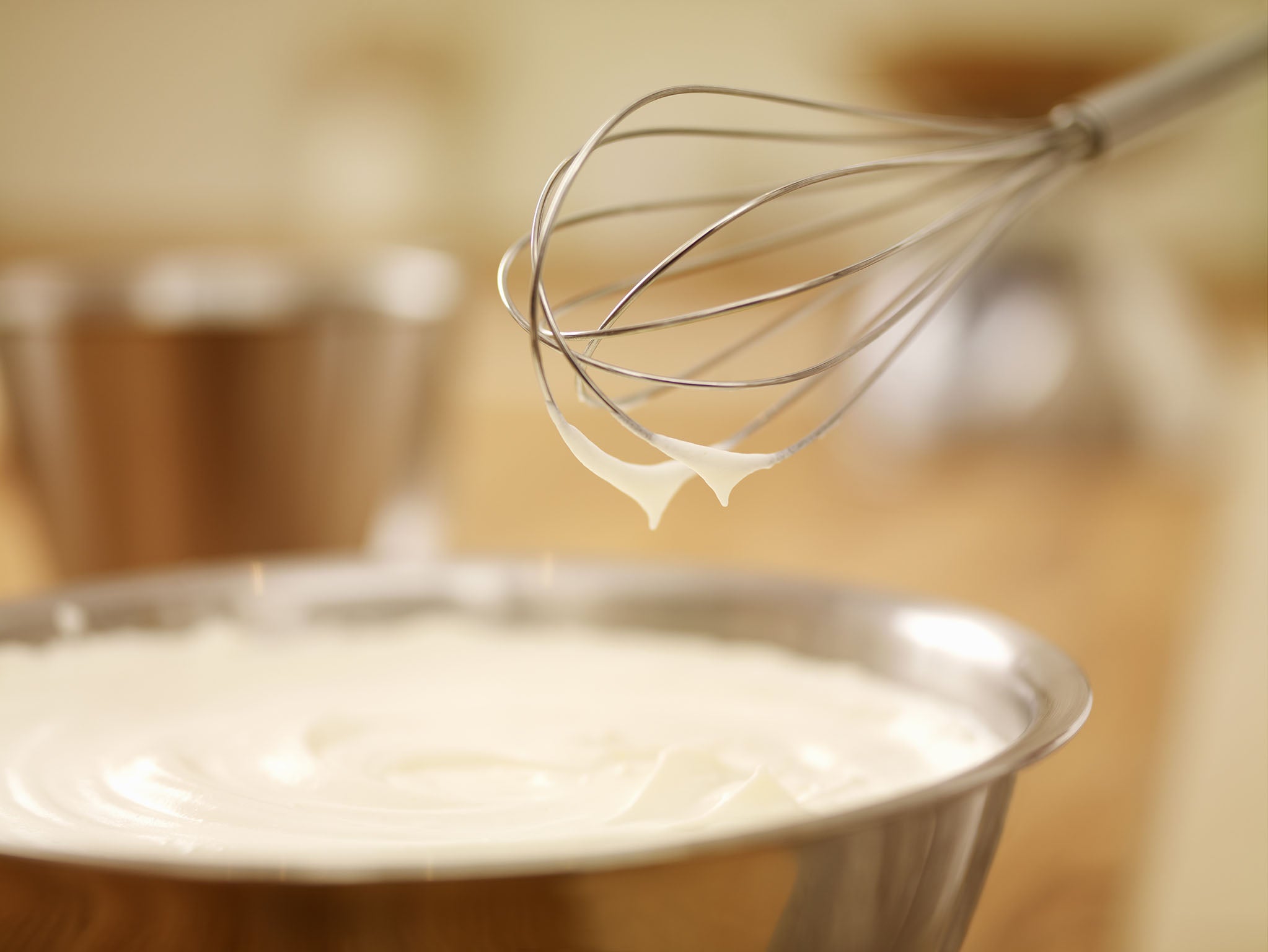Leiths' guide to whisking cream for a Christmas chocolate yule log
This month in our masterclass with Leiths, we're learning how to whisk cream, and how to rescue it if we over whip

Whisking cream
When cream is whisked, air bubbles are trapped as the cream thickens, enabling whipped cream to lighten and enrich mixtures, even helping them to set.
Whipping cream, which generally has a fat content of 35 per cent, creates a good volume when whisked. Double cream (45 per cent fat) can be relatively easily whisked, but produces a heavier result than whipping cream. Single cream has too low a fat content (22 per cent) to be successfully whisked.
It is very easy to over-whisk cream; many a roulade has been ruined by the grainy, fatty texture of over-whipped cream. To help avoid this, make sure the cream is cold before you whisk it. On a hot day, it is a good idea to whisk cream slowly, by machine or with a balloon whisk, as it can suddenly thicken.
If you are adding sweetness and flavourings to cream, such as icing or caster sugar, vanilla seeds or grated orange zest, add them before you start whisking. If added at the end of whisking, too often the cream becomes over-whisked, because as you adjust the seasoning, the cream thickens up more and more.
If you add acid or alcohol to cream, it will thicken much faster than usual.
If you are folding whipped cream into a sweet mixture, taste it when the other ingredients have been added, then adjust the sweetness accordingly. If you are eating the whipped cream with no added flavourings, you need to sweeten it with sugar or it will taste bland. If the cream is to go with something very sweet, such as meringue, it must be sweetened more, rather than less, than cream served with something less sweet. This is because the extreme contrast in sweetness gives the cream a slightly savoury flavour.
Whipping cream to different consistencies
1. When whisked to this stage, cream is thick enough to form soft peaks that hold briefly as you lift the whisk, then dissipate back into the cream. If cream is to be folded into another mixture, such as crème pâtissière, it should be of a similar consistency, usually soft peak.
2. To use for sandwiching cakes together or for piping, cream needs to be whisked to a slightly firmer peak, so it is just holding its shape but not splitting or looking ragged and textured if piped.
3. When piping whisked cream, it may overheat in a piping bag held by warm hands, and the last of the cream may curdle before it is piped. To avoid this, slightly under-whisk the cream, or only half-fill the piping bag.
Rescuing over-whipped cream...
If cream is a little over-whipped, you can rescue it by folding a little milk into it. It may first appear to thicken lumpily, but then it should smooth out and soften a little. Take care, as too much milk will loosen the cream too much, and it will be too runny to use.
For Leiths' Chocolate yule log recipe, visit here
Extracted from Leiths How to Cook by Leiths School of Food and Wine (Quadrille, £30) Photography © Peter Cassidy
Subscribe to Independent Premium to bookmark this article
Want to bookmark your favourite articles and stories to read or reference later? Start your Independent Premium subscription today.

Join our commenting forum
Join thought-provoking conversations, follow other Independent readers and see their replies